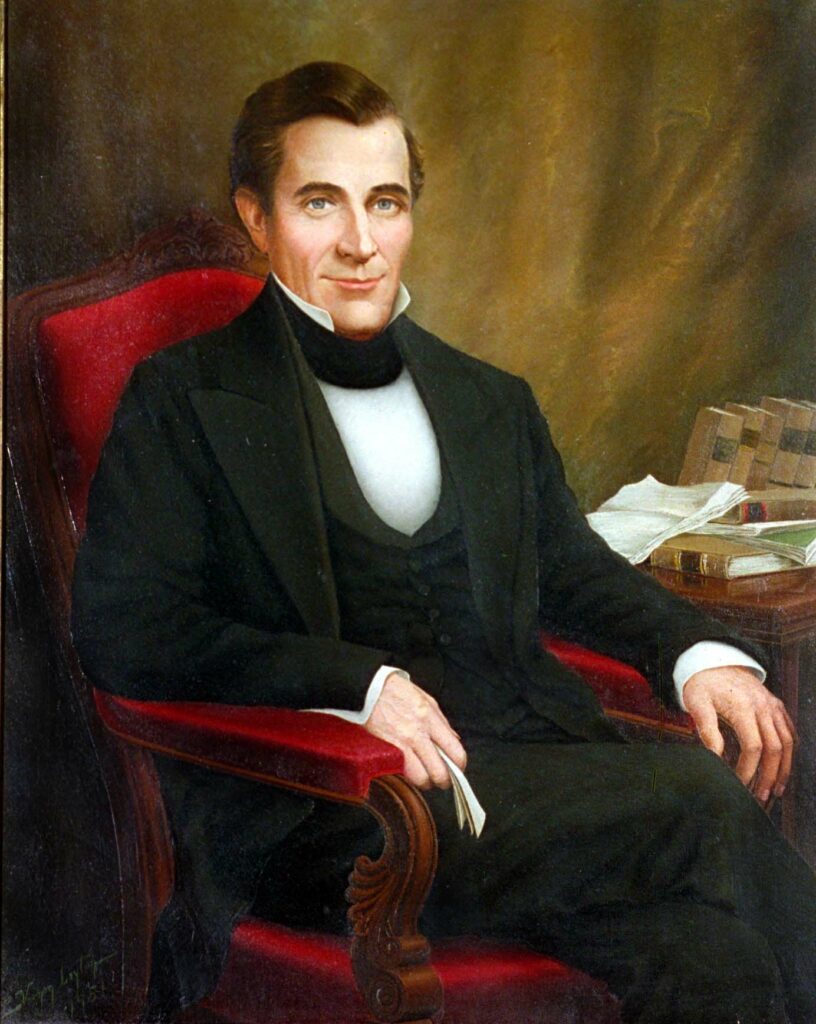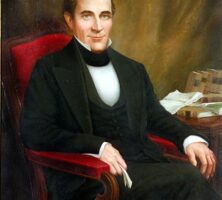Jared Irwin, a two-time Georgia governor of the early national period, is best known for repealing the Yazoo Act. He was also a decorated general, legislator, and delegate to the state convention that ratified the U.S. Constitution. Irwin County, in central Georgia, is named in his honor, as is its former seat, Irwinville, the locale of Confederate president Jefferson Davis’s capture in 1865. The town of Irwinton, in Wilkinson County, is also named for him.
Early Life and Career
Irwin was born around 1750 to Rebecca Lawson and Thomas Irwin in Anson County (later Mecklenburg County), North Carolina. Seven years after Irwin’s birth, the family migrated to Georgia and settled in St. George’s Parish (later Burke County). A colonel during the American Revolution (1775-83), Irwin received land in Washington County in 1784 as compensation for his service during the war. He lived in Washington County for much of his life and held various local offices there, as well as in Burke County, during his early political career.

After the war Irwin entered the Georgia militia, where he was promoted to brigadier general. In 1794 Irwin, along with General John Twiggs, commanded 1,200 militiamen to eject Elijah Clarke from lands that Clarke and his followers had illegally settled west of the Oconee River. Clarke’s so-called Trans-Oconee Republic was peacefully dismantled when Irwin offered full amnesty to those settlers who would voluntarily vacate the land. In the 1780s and 1790s Irwin served several terms in the state legislature. In that capacity he was a voting member of the convention that ratified the U.S. Constitution in 1787. He was also a pivotal participant in the 1789 and 1795 state constitutional conventions.
Little is known about Irwin’s personal life. He was probably married twice and fathered several children. Irwin was also a devout member of the Congregational Church, rather a rarity in postcolonial Georgia.
Governorship
In January 1796 the Georgia Assembly elected Irwin governor. Upon taking office, Irwin immediately faced a number of challenges resulting from changes made to the state constitution during the 1795 convention. One of these amendments called for the state capital to be moved from Augusta to Louisville. Other amendments instituted significant changes to the procedures and regulations governing the General Assembly, one of which caused the governor’s office to be left open between the end of George Mathews’s tenure in November 1795 and the beginning of Irwin’s. During that two-month transition, the illegal sale by Mathews of some of the state’s western lands erupted into what became known as the Yazoo land fraud, leaving Irwin to deal with the aftermath of the sale. Only a few weeks into his term, on February 13, 1796, the Georgia legislature passed the Rescinding Act, which nullified the sale. Irwin signed the act that same day, and the papers associated with the Yazoo Act were burned during a ceremony in Louisville.
Another momentous event of Irwin’s term occurred that same year in Savannah, when a fire destroyed large portions of the town, particularly its commercial districts. Irwin responded quickly to the calamity, ordering members of the militias of Bryan, Effingham, and Liberty counties to aid the residents of Savannah. In a second gesture of aid to the city, Irwin successfully led a legislative movement to allocate a portion of the revenues raised from the importation of enslaved people to rebuild Savannah.
Irwin’s first term as governor expired in January 1798, and later that year he was elected president of the state’s sixth constitutional convention. In 1806, while serving as president of the state senate, Irwin assumed the governorship following John Milledge’s resignation from office on September 23. Irwin completed Milledge’s term and went on to serve an additional full term, from 1807 to 1809. In 1807 Irwin once again found himself governor during a transfer of the state capital, this time from Louisville to Milledgeville.
Irwin died at his home in Washington County on March 1, 1818.






